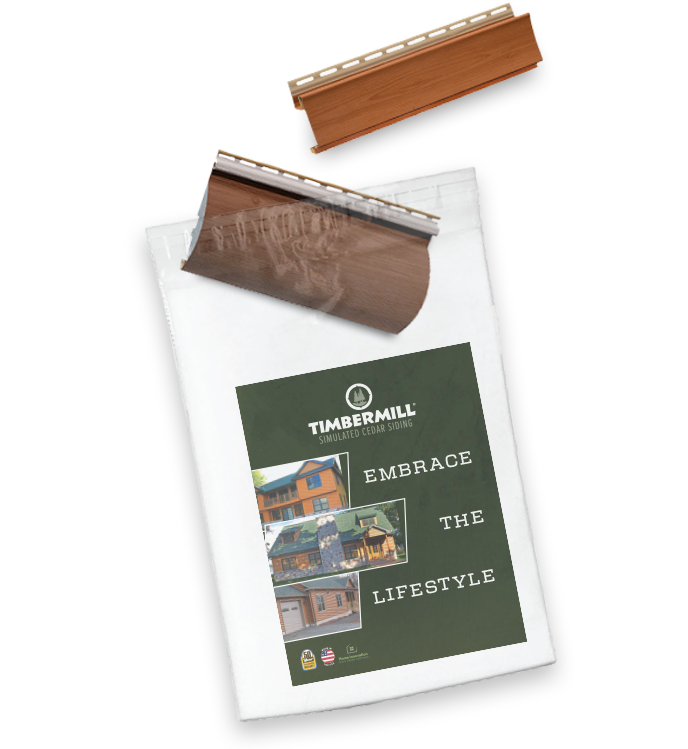If you love the great outdoors, it’s only natural to want your home or cabin to reflect that passion. No matter what kind of residence you’re working on, siding is an important element in safeguarding your personal space. However, there are a lot of financial factors to consider when replacing your siding, including materials, labor, and unique regional challenges.
Fortunately, Timbermill Vinyl Siding is here to help. In this guide, we’ll tell you how to create a budget for your siding project so you get the biggest bang for your buck. A thoughtful budget should account for every aspect of your project, including unexpected complications you may run into.
Assess Your Current Siding Condition
The first thing you should do is examine your current siding and consider the extent of your project. Do you plan to fix or replace certain spots, or are you overhauling the entire exterior? Check the perimeter of your property during the day, and make notes or take photos of areas you want to fix. During your inspection, check for signs of weather damage, pest intrusion, or warping.
If you have the budget for it, you may want to bring in a professional inspector, particularly if your property is in an area prone to extreme weather. A professional can identify structural issues that might affect your siding installation costs, such as damaged sheathing or insulation problems that you must address before installing new siding.

Research Material Options and Costs
The material you settle on has one of the biggest impacts on your budget. Many outdoor enthusiasts want to capture that natural wood aesthetic, but wooden siding can often add thousands of dollars to your budget. Fortunately, there are other options that deliver that aesthetic without the high cost or maintenance of natural wood.
Vinyl is a fantastic budget-friendly option that requires minimal maintenance and can withstand many common environmental issues. You can select vinyl with realistic wood patterns and textures that blend naturally with outdoor environments.
We recommend checking local material availability and delivery costs. Many suppliers charge additional fees when delivering to mountainous or hard-to-reach properties, so be sure to account for those costs in your overall budget.
Calculate Square Footage Accurately
You must calculate your property’s square footage to properly estimate your budget. Individually measure each of your property’s walls, and multiply the width by the height to get accurate square footage. Then, remove the square footage of windows, doors, or other openings.
After calculating the measurements, consider sketching each wall and labeling them with the dimensions. This creates a visual reference that you and your contractors can use to create a more reliable estimation.
Factor in Labor and Installation Costs
Another important part of creating a budget for your siding project is determining the labor costs. This is typically one of the largest expenses and may account for over half of the overall cost. Installation rates can vary depending on your location, the complexity of your property, and contractor availability. Many remote regions command higher prices due to travel time and potential logistical challenges.
Request quotes from multiple contractors in your area who have experience working on cabins or vacation homes. You want to work with someone who has experience with the siding material you’ve chosen and can work within your timeframe.
As such, consider the timing of your project when budgeting for labor. You’re likely to get better rates in the spring or summer, when outdoor conditions are favorable. Trying to book an extensive outdoor job in winter may raise rates and lead to scheduling delays.
Account for Additional Materials and Supplies
Your materials budget should include more than the primary siding. Make sure you also account for materials such as underlayment, flash, trim boards, and caulk. These components protect your cabin from moisture infiltration and ensure your siding performs properly over time.
You may also need to account for insulation if you choose to upgrade it. This is a good idea if you plan on using your cabin during hot summers or snowy winters. Upgrading the insulation during your siding project is a great way to enhance indoor comfort during the harsher seasons.
Factor in costs for protecting landscaping, outdoor furniture, and other property features during construction. Mountain properties often include carefully cultivated gardens or outdoor living spaces that require protection from construction debris and equipment.
Plan for Permits and Inspections
Many regions require building permits for siding replacement projects. While getting permission for these upgrades is usually straightforward, it’s important to know what permits or paperwork you need and how much money they will cost. Some mountain communities have architectural guidelines or environmental restrictions that affect material choices and installation methods.
Make sure you budget for initial permit applications, any mid-project inspections that may come up, and final approval inspections. Depending on the location of your property, inspections may cost more to cover travel fees.

Build in Contingency Funds
Renovation projects, particularly those involving older cabins or remote properties, frequently encounter unexpected complications. A safe bet is to add around 15 to 20 percent of your calculated budget to account for unforeseen issues. In a best-case scenario, your project may wind up under budget. On the other hand, if something goes wrong, that extra wiggle room can protect you from going over your expenses.
Common unexpected expenses include rotted sheathing, electrical or plumbing modifications, foundation repairs, or structural reinforcements required by current building codes. Certain outdoor properties may pose additional challenges such as pest control or moisture issues that don’t come up during the initial inspection.
Making Your Cabin Siding Dreams a Reality
A well-planned siding budget transforms your cabin renovation from a stressful financial burden into an exciting opportunity to enhance your outdoor retreat. Your careful preparation and thorough research ensure your project delivers the rustic beauty and weather protection you deserve for your mountain property.
If you’re looking for reliable, beautiful, and long-lasting siding, rebuild your cabin with Timbermill Vinyl Siding. We offer the rustic charm of authentic log cabin siding with the low-maintenance benefits of modern materials. Contact us today to learn how you can achieve the timeless look you love with the durability you need!


